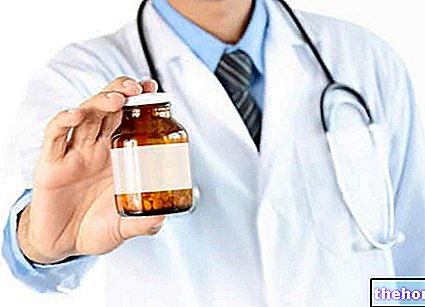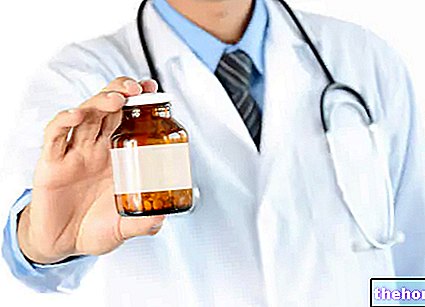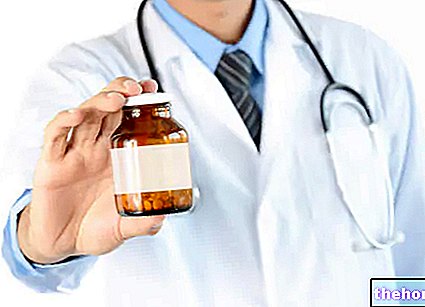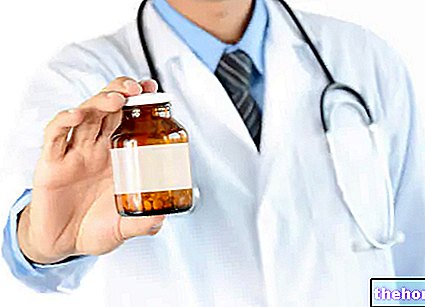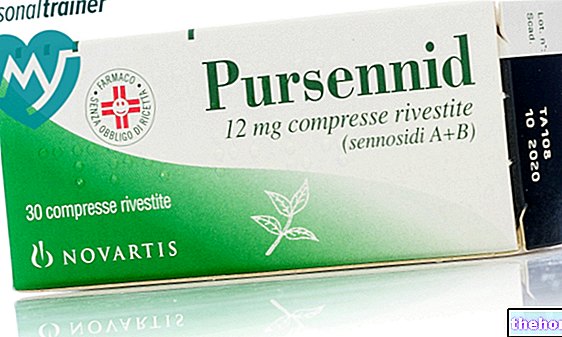Active ingredients: Fluorine (Fluorine salts)
Elmex Dental Gel 215g
Why is Elmex used? What is it for?
Pharmacotherapeutic group
Substance used in the prophylaxis of caries.
Therapeutic indications
Caries prophylaxis especially in subjects predisposed to it. Hypersensitivity of the dental collar.
Enamel decalcification caused by removable splints, partial dentures, orthodontic appliances. Topical fluoridation of tooth enamel.
Contraindications When Elmex should not be used
The product is contraindicated in children under 4 years of age.
Elmex dental gel should not be used in cases of:
- Hypersensitivity to the active substances or to any of the excipients
- Pathological desquamative changes of the oral mucosa (erosion of the epithelium)
Precautions for use What you need to know before taking Elmex
Information on the use of the medicine
Elmex dental gel is a concentrate for topical fluoridation of dental enamel and for increasing resistance to dental caries.
It is a product for oral hygiene and contains the active ingredients bis- (hydroxyethyl) -amino-propyl-Nhydroxyethyl-octadecylamine hydrofluoride, octadecylamine hydrofluoride and sodium fluoride.
It is known that the process of formation of caries is generally preceded by the corrosion of the dental enamel operated by substances of an acidic nature, such as lactic acid, which are formed following the fermentation of organic substrates containing carbohydrates, by bacteria (especially of the Streptococcus strain) which form the so-called dental plaque on the tooth.
By topical administration of amine fluorides, caries prevention is carried out at different levels of the pathogenetic process. In fact, as has been shown by numerous experiments both in vivo and in vitro, the following effects occur:
- increased resistance of the enamel to the corrosive action of fermentation products, following the absorption of fluorine;
- inhibition of the growth and development of plaque bacteria;
- inhibition of their metabolic activity.
It should also be noted that the fluorine absorbed by the enamel is eliminated very slowly, allowing it to remain for long periods of concentrations sufficient to guarantee the aforementioned protective activities.
Interactions Which drugs or foods may change the effect of Elmex
Tell your doctor or pharmacist if you have recently taken any other medicines, even those without a prescription.
Ingestion of calcium (eg milk), magnesium and aluminum (in medicines to treat stomach problems; antacids) immediately following treatment with elmex dental gel may reduce the effects of fluorides.
Warnings It is important to know that:
Special warnings
Parental supervision is advisable when elmex dental gel is used by children under the age of eight.
Do not swallow. In case of accidental ingestion, it is advisable to take substances containing calcium (eg milk), or in case of ingestion of large quantities (more than one pack) to seek medical attention.
Pregnancy and breastfeeding
Ask your doctor or pharmacist for advice before taking any medicine.
There are no special precautions for use in case of pregnancy.
Elmex Dental Gel should be used with caution in nursing mothers as fluorides pass into breast milk.
Effects on ability to drive and use machines
Elmex gel does not affect the ability to drive or use machines.
Dosage and method of use How to use Elmex: Dosage
In dental offices, outpatient clinics or clinics, elmex dental gel can be spread on the teeth using the rotating toothbrush or with a cotton swab. The application using a plastic or wax impression tray is particularly effective and has a lasting effect.
Adequate contact time of the dental gel with the teeth must be maintained (at least 2-4 minutes). However, do not exceed 5 minutes. Rinse your mouth after use.
In the case of subjects over the age of eight with frequent carious processes, it is advisable to leave the patient leaving small residues of elmex dental gel in the cracks of the enamel or in the interdental cavities.
Use in group prophylaxis
Brush teeth with elmex dental gel as part of group prophylaxis activities about twice a year and more often in the case of children and adolescents at increased risk of caries. Rinse after 2-3 minutes. Total application time (time brushing and residence) should not exceed 5 minutes.
Overdose What to do if you have taken too much Elmex
In case of accidental ingestion / intake of an excessive dose of elmex gel, notify your doctor immediately or go to the nearest hospital.
If you have any questions about the use of elmex gel, ask your doctor or pharmacist.
Symptoms of overdose
- Acute overdose: in cases of acute overdose, local mucosal irritation is possible. Depending on the dose and method of application, up to 100 mg may be introduced into the oral cavity in extreme cases (eg by spoon application). of fluoride, corresponding to 8 g of elmex dental gel. Swallowing this amount can lead to nausea, vomiting and diarrhea. In most cases, these symptoms occur within the first hour after ingestion and resolve within three to six hours. hours.
- Chronic overdose: Regularly exceeding a total daily dose of 2mg fluoride during tooth development up to approximately 8 years of age can lead to disturbances in tooth enamel mineralization. This condition, known as dental fluorosis, no longer occurs after this age, even at high daily doses. It appears as specks on the tooth enamel.
Management of overdose
- Acute overdose: with mild symptoms of intoxication (less than 150 mg of fluoride, corresponding to less than 12 g of elmex dental gel) calcium-containing drinks (milk, soluble calcium tablets) should be given to bind the fluoride.
With severe symptoms of intoxication (more than 150 mg of fluoride, corresponding to more than 12 g of elmex dental gel) the additional administration of activated charcoal is recommended.
If necessary, calcium can be administered intravenously, forced diuresis with alkalization of the urine can also be initiated. Heart rate, coagulation, electrolyte and acid-base balance should be carefully monitored.
Side Effects What are the side effects of Elmex
Like all medicines, elmex gel can cause side effects, although not everybody gets them.
- Desquamative changes in the oral mucosa (in very rare cases, including individual cases).
- Superficial erosions and ulceration of the mucous membrane of the oral cavity following repeated spoon applications after short intervals.
- Hypersensitivity, intolerance, allergic reactions
- Vomiting, nausea and diarrhea
Compliance with the instructions contained in the package leaflet reduces the risk of undesirable effects.
Reporting of side effects
If you get any side effects, talk to your doctor or pharmacist. This includes any possible side effects not listed in this leaflet. You can also report side effects directly via the Italian Medicines Agency, Website: www.agenziafarmaco.gov.it/it/responsabili. By reporting side effects you can help provide more information on the safety of this medicine.
Expiry and Retention
Expiry: see the expiry date printed on the package.
Warning: do not use the medicine after the expiry date indicated on the package.
The expiry date indicated on the package refers to the product in intact packaging, correctly stored.
Medicines should not be disposed of via wastewater or household waste. Ask your pharmacist how to dispose of medicines you no longer use. This will help protect the environment.
Keep out of the reach and sight of children.
Other information
COMPOSITION
100 g of dental gel contain: dihydrofluoride of bis- (hydroxyethyl) -amino-propyl-N-hydroxyethyloctadecylamine 3.032 g; 0.287 g octadecylamine hydrofluoride; sodium fluoride 2.210 g (total fluorine content = 1.25%).
Excipients: propylene glycol, hydroxyethylcellulose, saccharin, spearmint oil, peppermint oil, banana flavor, apple flavor, DL-menton, purified water.
PHARMACEUTICAL FORM AND CONTENT
1 x 215g tube of dental gel for dental use.
Source Package Leaflet: AIFA (Italian Medicines Agency). Content published in January 2016. The information present may not be up-to-date.
To have access to the most up-to-date version, it is advisable to access the AIFA (Italian Medicines Agency) website. Disclaimer and useful information.
01.0 NAME OF THE MEDICINAL PRODUCT
ELMEX DENTAL GEL 215 g
02.0 QUALITATIVE AND QUANTITATIVE COMPOSITION
100 g of dental gel contain active ingredients:
• bis- (hydroxyethyl) -amino-propyl-N-hydroxyethyl-octadecylamine dihydrofluoride g 3.032
• 0.287 g octadecylamine hydrofluoride
• sodium fluoride 2.210 g (total fluorine content = 1.25%)
For the full list of excipients, see section 6.1.
03.0 PHARMACEUTICAL FORM
Transparent dental gel for topical use.
04.0 CLINICAL INFORMATION
04.1 Therapeutic indications
Caries prophylaxis especially in subjects predisposed to it. Hypersensitivity of the dental collar. Enamel decalcification caused by removable splints, partial dentures, orthodontic appliances. Topical fluoridation of tooth enamel.
04.2 Posology and method of administration
In dental offices, outpatient clinics or clinics, elmex dental gel can be spread on the teeth using the rotating toothbrush or with a cotton swab. The application using a plastic or wax impression tray is particularly effective and has a lasting effect. Adequate contact time of the dental gel with the teeth must be maintained (at least 2-4 minutes). However, do not exceed 5 minutes. . Rinse your mouth after use.
In the case of subjects over the age of eight with frequent carious processes, it is advisable to leave the patient leaving small residues of elmex dental gel in the cracks of the enamel or in the interdental cavities.
Use in group prophylaxis
Brush teeth with elmex dental gel as part of group prophylaxis activities about twice a year and more often in the case of children and adolescents at increased risk of caries. Rinse after 2-3 minutes. Total application time (time brushing and residence) should not exceed 5 minutes.
04.3 Contraindications
The product is contraindicated in children under 4 years of age. Elmex dental gel should not be used in cases of:
• hypersensitivity to the active substances or to any of the excipients
• pathological desquamative changes of the oral mucosa (erosion of the epithelium)
04.4 Special warnings and appropriate precautions for use
For people in whom control of the swallowing reflex cannot be guaranteed (e.g. preschool children, disabled people), alternatives with precise dosage, such as fluoride tablets, should be preferred.
Systemic administration of fluoride (eg with fluoride tablets) should be discontinued for a few days after application of elmex dental gel.
Due to the risk of overdose and consequent intoxication, the application of elmex dental gel in a Miniplast mask or with a suitably modeled wax mask is not recommended for children under eight years of age.
Elmex dental gel should not be used in case of bone and / or enamel fluorosis.
Desquamation, superficial erosions and ulceration of the oral mucosa have been reported rarely (
There are incompatibilities with anionic surfactants and other large anionic molecules, all soluble salts of calcium, magnesium and aluminum (see also 4.5).
04.5 Interactions with other medicinal products and other forms of interaction
Ingestion of calcium (eg milk), magnesium and aluminum (in medicines to treat stomach problems; antacids) immediately following treatment with elmex dental gel may reduce the effects of fluorides.
04.6 Pregnancy and breastfeeding
There is no evidence that fluorides pose a risk to the embryo.
Fluorides pass into breast milk. Therefore elmex dental gel should be used with caution in nursing mothers.
04.7 Effects on ability to drive and use machines
Elmex gel does not affect the ability to drive or use machines.
04.8 Undesirable effects
Skin and subcutaneous tissue disorders
In individual cases
• desquamative changes in the oral mucosa (in very rare cases,
• superficial erosions and ulceration of the mucous membrane of the oral cavity following repeated applications by means of a spoon after short intervals.
• hypersensitivity, intolerance, allergic reactions
Gastrointestinal disorders
Vomiting, nausea and diarrhea
In case of overdose, see also 4.9 Overdose
04.9 Overdose
a) Symptoms of overdose
Acute
In cases of acute overdose, local mucosal irritation is possible.
Depending on the dose and method of application, up to 100 mg of fluoride, corresponding to 8 g of elmex dental gel, can be introduced into the oral cavity in extreme cases (e.g. with spoon application). Swallowing this amount can cause nausea, vomiting and diarrhea. In most cases, these symptoms occur within the first hour after ingestion and resolve within three to six hours.
Chronic
regularly exceeding a total daily dose of fluoride of 2 mg during tooth development up to approximately 8 years of age can lead to disturbances in tooth enamel mineralization. This condition, known as dental fluorosis, no longer occurs after this age, even at high daily doses. It appears as specks on the tooth enamel.
b) Management of overdose
Acute
With mild symptoms of intoxication (less than 150 mg of fluoride, corresponding to less than 12 g of elmex dental gel) calcium-containing drinks (milk, soluble calcium tablets) should be given to bind the fluoride.
With severe symptoms of intoxication (more than 150 mg of fluoride, corresponding to more than 12 g of elmex dental gel) the additional administration of activated charcoal is recommended. If necessary, calcium can be administered intravenously, forced diuresis with alkalization of the urine can also be initiated. Heart rate, coagulation, electrolyte and acid-base balance should be carefully monitored.
05.0 PHARMACOLOGICAL PROPERTIES
05.1 Pharmacodynamic properties
Pharmacotherapeutic group: substance used in caries prophylaxis, ATC code: A01A A51.
It is known that the process of formation of caries is generally preceded by the corrosion of the dental enamel operated by substances of an acidic nature, such as lactic acid, which are formed following the fermentation of organic substrates containing carbohydrates, by bacteria (especially of the Streptococcus strain) which form the so-called dental plaque on the tooth.
By topical administration of amine fluorides, caries prevention is carried out at different levels of the pathogenetic process. In fact, as has been shown by numerous experiments both in I live that in vitro, the following effects occur:
• increased resistance of the enamel to the corrosive action of fermentation products, following the absorption of fluorine;
• inhibition of the growth and development of plaque bacteria;
• inhibition of their metabolic activity.
It should also be noted that the fluorine absorbed by the enamel is eliminated very slowly, allowing it to remain for long periods of concentrations sufficient to guarantee the aforementioned protective activities.
05.2 Pharmacokinetic properties
Not relevant.
05.3 Preclinical safety data
LD50 in g / kg of product administered orally: mouse 9.464 g / kg - rat 9.352 g / kg
06.0 PHARMACEUTICAL INFORMATION
06.1 Excipients
Propylene Glycol, Hydroxyethyl Cellulose, Saccharin, Spearmint Oil, Peppermint Oil, Banana Flavor, Apple Flavor, DL-Menton, Purified Water.
06.2 Incompatibility
See section 4.4 Special warnings and precautions for use.
06.3 Period of validity
30 months.
06.4 Special precautions for storage
No special storage precautions.
06.5 Nature of the immediate packaging and contents of the package
Polyethylene pipe.
Pack of 215 g.
06.6 Instructions for use and handling
No special instructions.
07.0 MARKETING AUTHORIZATION HOLDER
GABA Vebas s.r.l. - Via Giorgione 59/63 - 00147 Rome
Under license from GABA International Ltd. - Therwil (Switzerland)
08.0 MARKETING AUTHORIZATION NUMBER
AIC n. 026487025 - "Dental gel" 215 g tube
09.0 DATE OF FIRST AUTHORIZATION OR RENEWAL OF THE AUTHORIZATION
Renewal: May 2005
10.0 DATE OF REVISION OF THE TEXT
AIFA determination of 09 September 2010

